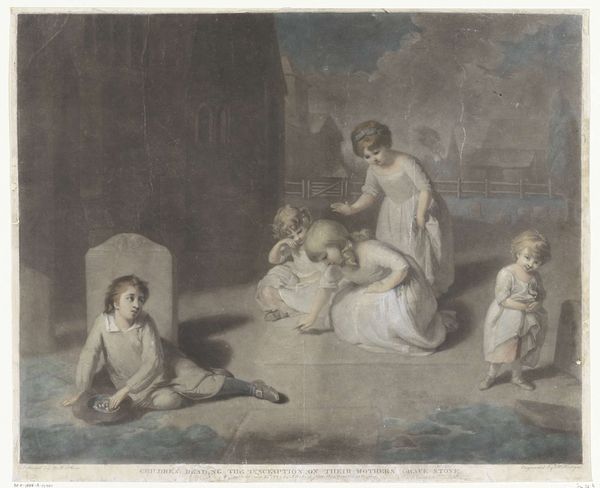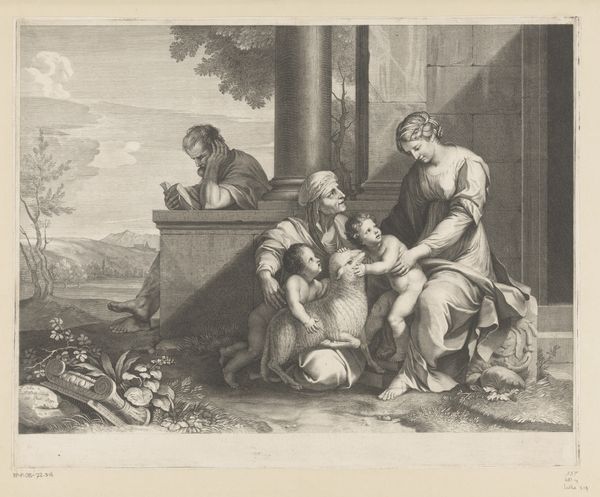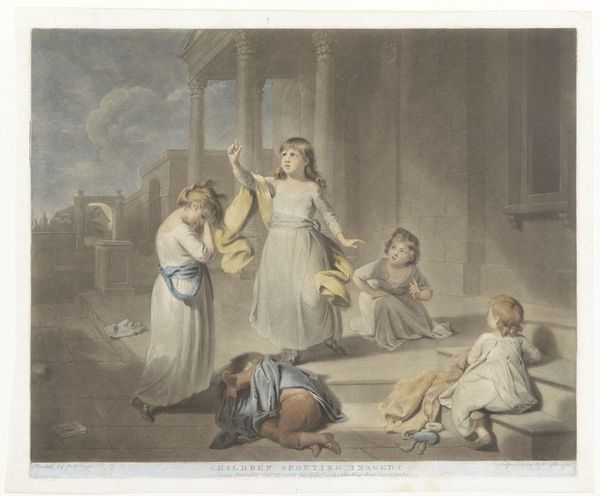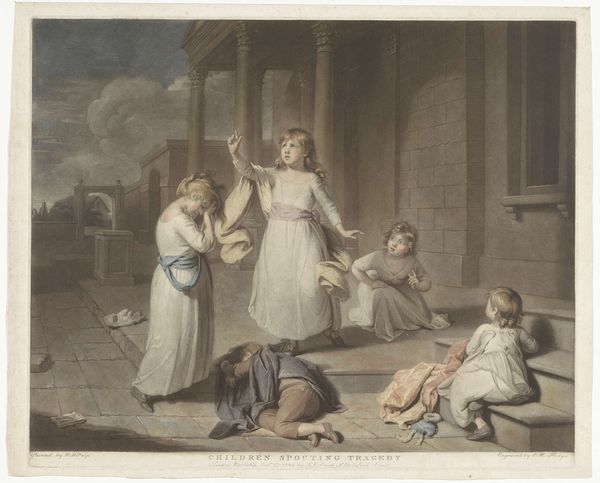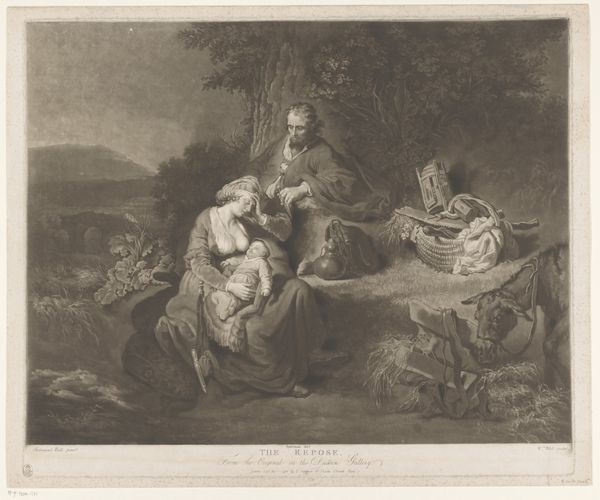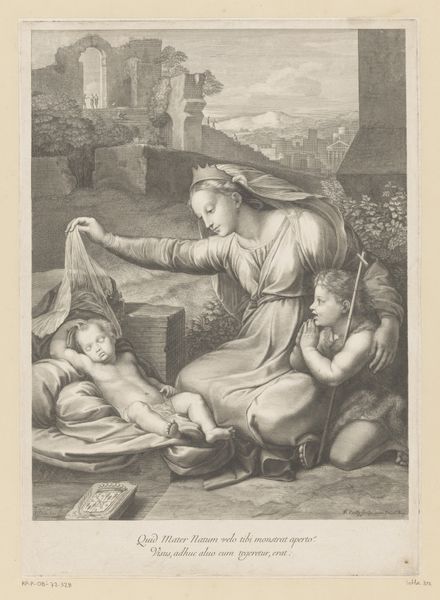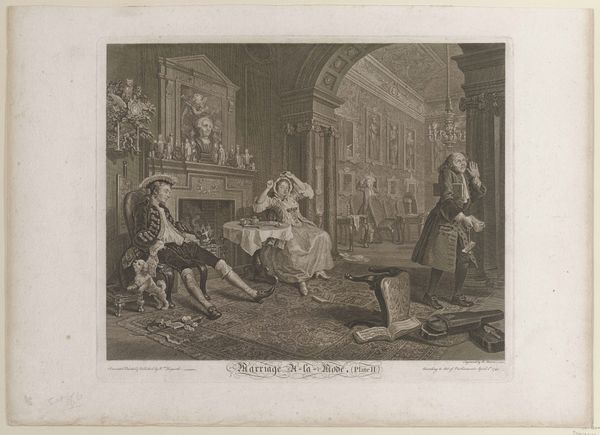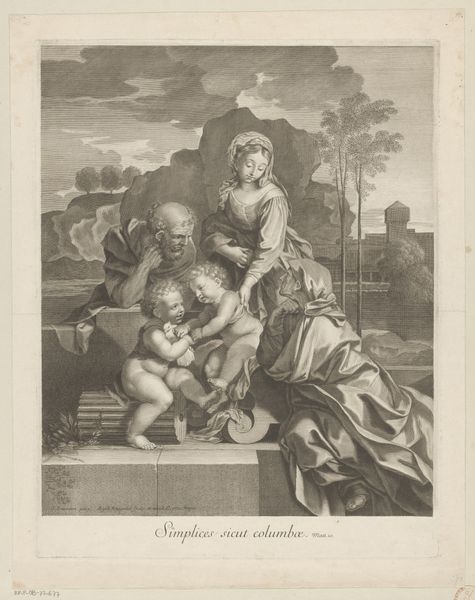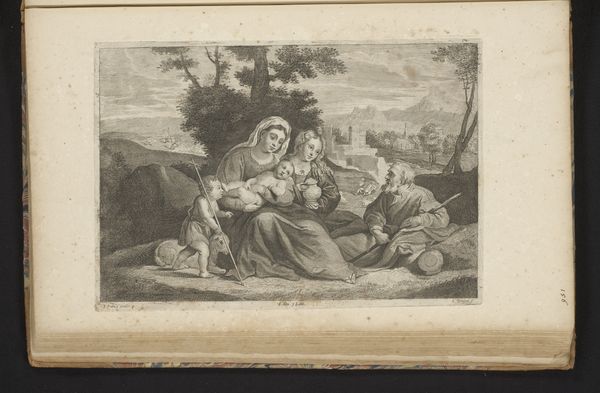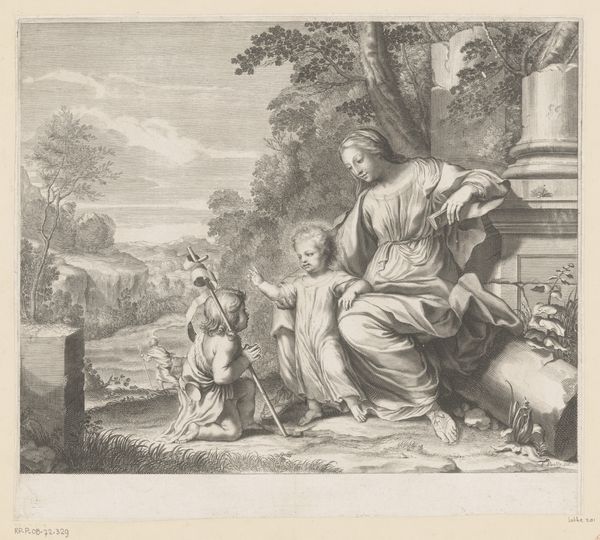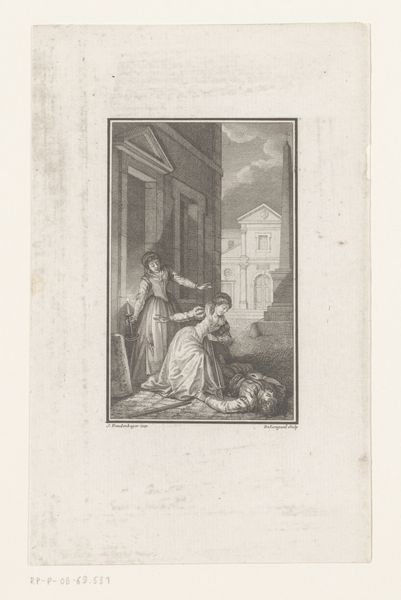
Dimensions: height 454 mm, width 551 mm
Copyright: Rijks Museum: Open Domain
Editor: So this is “Children Reading the Inscription on their Mother's Gravestone” made in 1785 by William Ward. It’s a somber scene, five children clustered around a grave, rendered in these soft watercolors. There's a sense of stillness and loss. How do you interpret the imagery at play here? Curator: This image is striking in its use of visual symbols to explore themes of loss and memory. The gravestone itself, obviously, represents not just death, but the permanence of memory. What do you make of the children's postures and placement around it? Editor: Some are touching the stone, one seems lost in thought... They’re all reacting differently. Is that significant? Curator: Precisely! Think about it - each child embodies a different facet of grief. One traces the inscription – perhaps clinging to words, to stories. Another sits apart, isolated with their grief and holding what looks like a toy bird... This highlights the individualized nature of mourning. The setting—a churchyard, a place of both mourning and possible solace, of transition between worlds—adds layers too, don’t you think? Editor: That’s true; the church and graveyard create such a strong visual and emotional context, emphasizing mortality, but also continuity in a way... Does that continuity have something to do with cultural memory, of how mourning rituals remain through generations? Curator: Excellent point. Ward, and Romanticism in general, were fascinated with emotional impact on memory; with how symbols transcend individual experience and enter a shared cultural consciousness. Think of graveyards like graveyards - places both terribly individual, but terribly collective at the same time. Editor: It’s much more than just a scene of grieving children. It's about how we process and remember loss collectively. Thanks! Curator: My pleasure. The painting provides an aperture onto not just a scene, but something timeless about what is carried by cultural memory and visual imagery across generations.
Comments
No comments
Be the first to comment and join the conversation on the ultimate creative platform.
